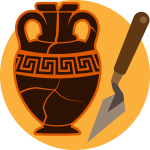A Large Deposit
Much of what scientists know about Coelophysis can be traced back to 1947. This is when a group of paleontologists from the American Museum of Natural History discovered hundreds of skeletons of Coelophysis at Ghost Ranch, New Mexico.
It was one of the largest dinosaur deposits ever found!
It held skeletons of Coelophysis adults, young adults, and juveniles, providing important clues about how these early dinosaurs grew. But how did they all end up in one place? Scientists believe they were quickly buried together in a flash flood. Over time, more bones provided more clues about this little dinosaur and what made it such a successful predator.
Its lower leg bones indicated a long stride, able to run up to 25 miles per hour. Its front limbs had three clawed fingers for catching and holding prey. And the skull's large eye sockets suggest that Coelophysis had large eyes—and sharp vision.




 Biodiversity
Biodiversity
 Brain
Brain
 Genetics
Genetics
 Marine BiOLogy
Marine BiOLogy
 MicrobiOLogy
MicrobiOLogy
 PaleontOLogy
PaleontOLogy
 ZoOLogy
ZoOLogy
 AnthropOLogy
AnthropOLogy
 ArchaeOLogy
ArchaeOLogy
 Astronomy
Astronomy
 Climate Change
Climate Change
 Earth
Earth
 Physics
Physics
 Water
Water


